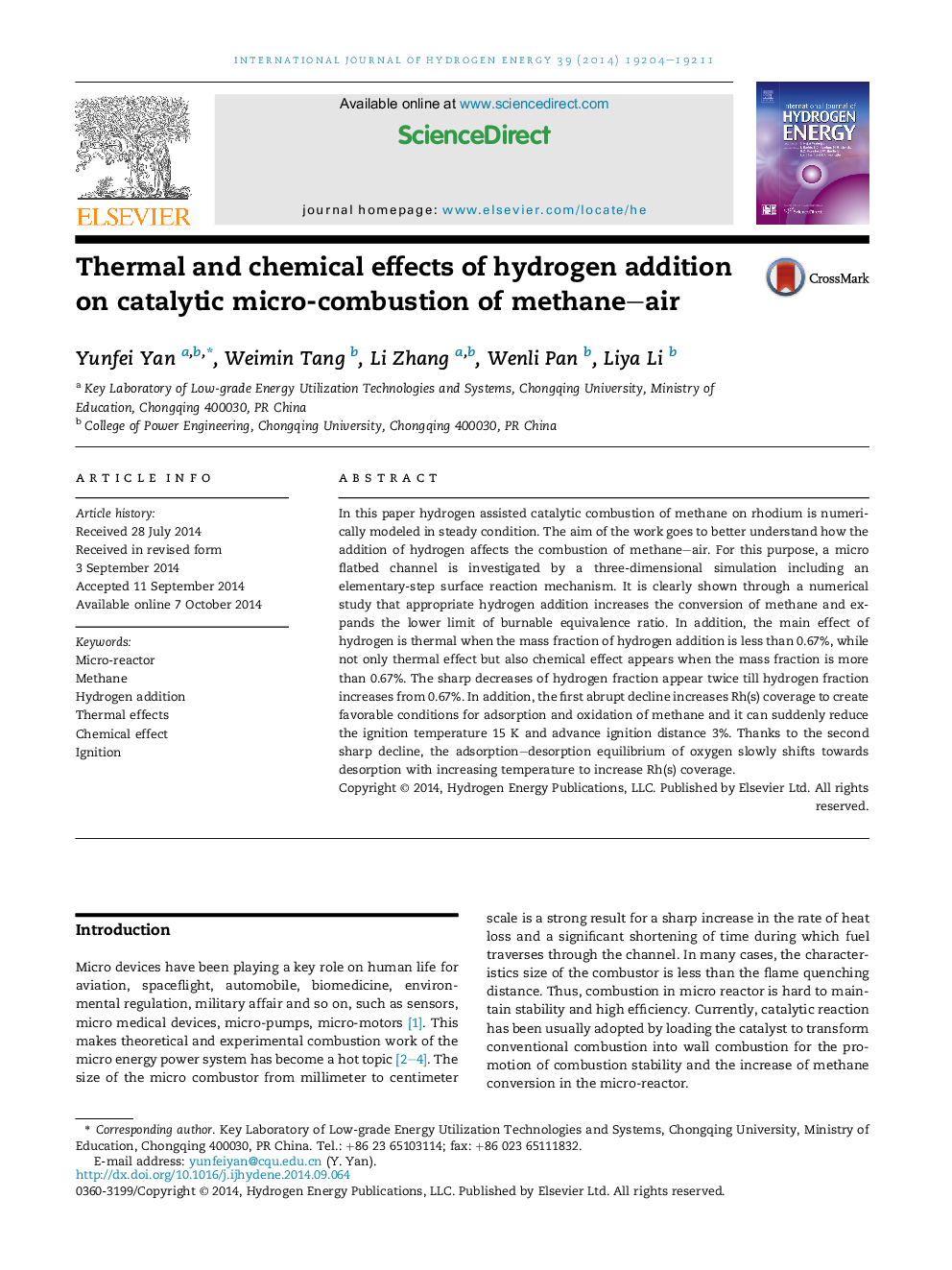| Article ID | Journal | Published Year | Pages | File Type |
|---|---|---|---|---|
| 7717752 | International Journal of Hydrogen Energy | 2014 | 8 Pages |
Abstract
In this paper hydrogen assisted catalytic combustion of methane on rhodium is numerically modeled in steady condition. The aim of the work goes to better understand how the addition of hydrogen affects the combustion of methane-air. For this purpose, a micro flatbed channel is investigated by a three-dimensional simulation including an elementary-step surface reaction mechanism. It is clearly shown through a numerical study that appropriate hydrogen addition increases the conversion of methane and expands the lower limit of burnable equivalence ratio. In addition, the main effect of hydrogen is thermal when the mass fraction of hydrogen addition is less than 0.67%, while not only thermal effect but also chemical effect appears when the mass fraction is more than 0.67%. The sharp decreases of hydrogen fraction appear twice till hydrogen fraction increases from 0.67%. In addition, the first abrupt decline increases Rh(s) coverage to create favorable conditions for adsorption and oxidation of methane and it can suddenly reduce the ignition temperature 15Â K and advance ignition distance 3%. Thanks to the second sharp decline, the adsorption-desorption equilibrium of oxygen slowly shifts towards desorption with increasing temperature to increase Rh(s) coverage.
Related Topics
Physical Sciences and Engineering
Chemistry
Electrochemistry
Authors
Yunfei Yan, Weimin Tang, Li Zhang, Wenli Pan, Liya Li,
